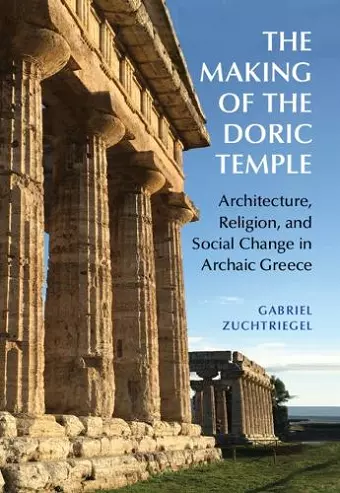The Making of the Doric Temple
Architecture, Religion, and Social Change in Archaic Greece
Format:Hardback
Publisher:Cambridge University Press
Published:20th Apr '23
Currently unavailable, and unfortunately no date known when it will be back

The author argues that Doric architecture originated in a disruptive shift in urbanism, land use, and colonization in Archaic Greece.
On the basis of old and new archaeological data, some which presented for the first time, the author argues that Doric architecture originated in a disruptive shift in urbanism, land use, and colonization in Archaic Greece and has nothing to do with a wood-to-stone evolution, as maintained in the past.In this volume, Gabriel Zuchtriegel revisits the idea of Doric architecture as the paradigm of architectural and artistic evolutionism. Bringing together old and new archaeological data, some for the first time, he posits that Doric architecture has little to do with a wood-to-stone evolution. Rather, he argues, it originated in tandem with a disruptive shift in urbanism, land use, and colonization in Archaic Greece. Zuchtriegel presents momentous architectural change as part of a broader transformation that involved religion, politics, economics, and philosophy. As Greek elites colonized, explored, and mapped the Mediterranean, they sought a new home for the gods in the changing landscapes of the sixth-century BC Greek world. Doric architecture provided an answer to this challenge, as becomes evident from parallel developments in architecture, art, land division, urban planning, athletics, warfare, and cosmology. Building on recent developments in geography, gender, and postcolonial studies, this volume offers a radically new interpretation of architecture and society in Archaic Greece.
'This excellent, thought-provoking book is very different from the many traditional books about Greek architecture that focus on the Doric style and its evolution in purely architectural terms. … The author provides interesting discussion of how and why the Doric temple, set within a sanctuary, came to define religious space and at the same time shift the focus from traditional religious beliefs in gods as spiritual forces that dwelled in various environments in nature to anthropomorphic temple cult images in urban contexts. Well written and rich in ideas and approaches, this is a book for scholars. … Essential.' J. Pollini, Choice
ISBN: 9781009260107
Dimensions: 260mm x 182mm x 18mm
Weight: 700g
276 pages